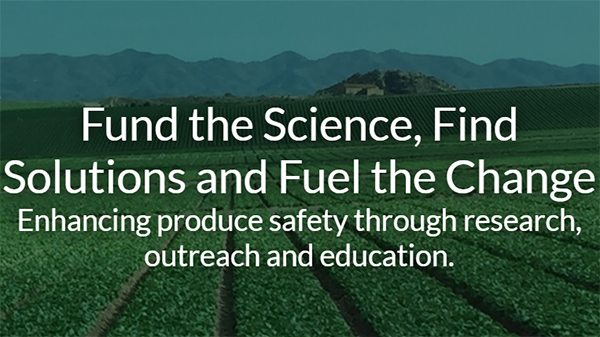CPS ANNOUNCEMENT: November 7, 2019 – Most recent research into the use of compost and manure on produce farms focuses on increased food safety risks from the potential contributions to foodborne pathogens.
However, Daniel Karp, Ph.D., is investigating the benefits of such soil amendments, and whether their use can enhance soil microbial communities which outcompete or displace foodborne pathogens.
“We know that compost and manures are really important potential pathways for pathogens to be entering farm fields,” said Karp, with the University of California, Davis, Department of Fish, Wildlife, and Conservation Biology. “There’s also a flip side to this. There’s a theory that if compost or manures build up the organic matter in the soils, then this soil would be healthier, with a more diverse community of microbes that could outcompete pathogens over time.”
This investigative effort is the second of two objectives within his project, titled ” Towards a decision-support tool for identifying and mitigating on-farm risks to food safety.” Joining him as co-principal investigators on the project are Jeffery McGarvey, Ph.D.,with the U.S. Department of Agriculture’s Agricultural Research Service, and Kate Scow, Ph.D., Russell Ranch director, with the University of California, Davis.
Karp’s first objective involves reviewing existing scientific peer-reviewed literature regarding preharvest tools growers can use to mitigate risks of foodborne pathogens to increase its visibility in the industry. Many research reports are not accessible to growers because they are either behind pay walls or are written in a way that is difficult to understand, Karp said. He and his team will scour the literature and then write a standardized synopsis in lay language for each article so growers, packers, and others can understand the research results.
Once complete, Karp envisions a tool where users can search terms, such as “food safety soil management,” and retrieve a simple look-up table of ranked articles. Although similar literature compilations have been conducted on a much broader scale on other topics, Karp said this is the first compilation he knows of within the scope of produce food safety. Because of the challenges of fine-tuning search results so they are not too narrow or too wide, his first objective is not as far along as the second.
“We’re having a hard time compiling this literature, and we’re trained scientists,” Karp said. “How could we expect farmers to do it?”
Altogether, Karp hopes the project will provide growers with new strategies for mitigating pathogen prevalence and a science-based tool to help address the food safety/conservation “stale-mate.”
Already a season into the second objective, Karp said the preliminary data looks “encouraging and exciting.” The research involves collecting soil samples five times during the growing season from four different plots at the Russell Ranch long-term sustainability project near Winters, California. Each 1-acre plot is part of the Century Experiment and has been under the same distinct management regime for 23 years.
The treatments are conventional fertilizer, 50% fertilizer and 50% composted poultry litter, conventional fertilizer and a cover crop, and poultry compost and a cover crop. In addition, the researchers are working with a smaller-scale experiment that involves soil from a plot that has received only two years of one of three treatments: 100% conventional fertilizer, 50% raw dairy manure and 50% conventional fertilizer, or 100% dairy manure with a cover crop.
After collection, the soil samples are quickly inoculated in the laboratory with known quantities of Salmonella or Listeria monocytogenes, and the researchers measure die-off rates over 10 days and 30 days. They also analyze the soil samples from the different treatments for physical and chemical properties.
In addition, co-PI McGarvey plans to sequence the DNA of the 10,000 or more isolates that comprise the microbial communities from samples showing the most pathogen suppression. By challenging them with either Salmonella or Listeria, he hopes to identify the organisms that ae pathogen suppressive. The researchers are just beginning to analyze the results of the die-off experiments, and some trends are becoming apparent.
“There’s not much coming out of the short-term plots,” Karp said. “But we’re seeing some results with the Century Plots where it looks like compost over the long term might be pathogen suppressive.”
The Century Plots were planted to corn this season and will be planted to processing tomatoes in 2020, following traditional crop rotations for the Sacramento Valley, when the researchers plan to repeat the sample collections.
Project abstract may be found on the Center for Produce Safety website:
Towards a decision-support tool for identifying and mitigating on-farm risks to food safety
Learn more about this project and other CPS funded research by visiting our Funded Research Projects page on the CPS website.



